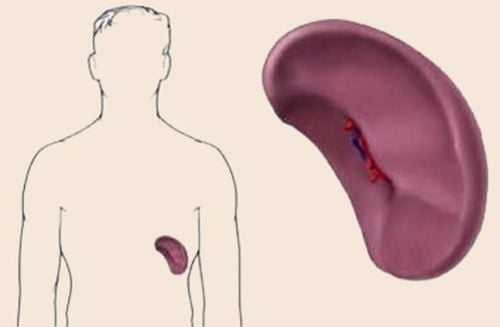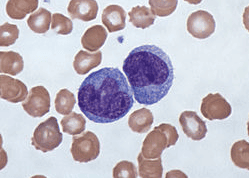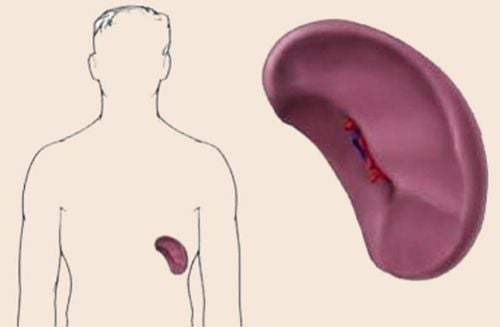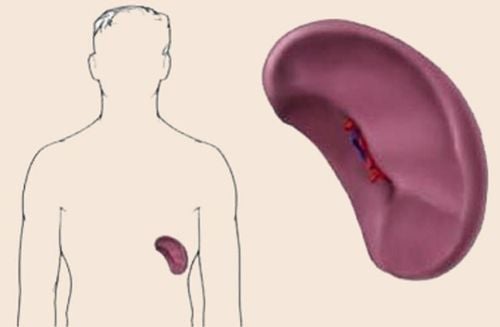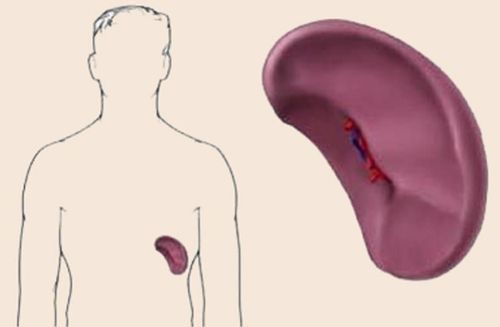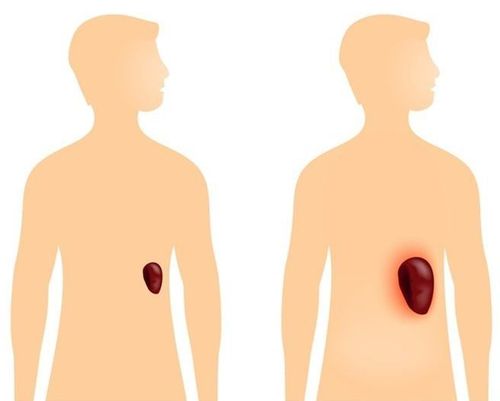This is an automatically translated article.
The article was professionally consulted by Specialist Doctor I Vo Thi Thuy Trang - Gastroenterologist, Department of Medical Examination & Internal Medicine - Vinmec Danang International Hospital. The doctor has many years of experience in the field of gastrointestinal endoscopy.1. Is splenic abscess dangerous?
Splenic abscess is a long-standing but rare disease, this is a pathological condition in which the tissues in the spleen are infected and then damaged and form an abscess containing necrotic cells and pus. . Splenic abscesses may be localized to the spleen or diffuse to nearby organs and regions. Small, solitary abscesses of 1 mass are usually localized. Large abscesses located in the upper pole of the spleen can spread to the left pleura, lesions in the lower pole tend to spread to the colon. The average clinical incidence of splenic abscess is less than 1%, which varies from population to region.Diagnosis of splenic abscess is often difficult because its clinical symptoms are not specific, can be confused with other diseases or diagnosed late when the abscess is heavily diffused. Therefore, in order to make an accurate diagnosis, it is necessary to combine with paraclinical means, mainly imaging methods such as abdominal ultrasound or abdominal computed tomography. Treatment of splenic abscess is effective with antibiotics in the early stages of the disease. However, in most cases, patients with splenic abscess require splenectomy. The mortality rate of splenic abscess is still quite high, reaching nearly 50% of the total cases. Early detection and diagnosis, prompt treatment helps to reduce the number of patients who die from splenic abscess.

2. Causes of splenic abscess
Splenic abscess is a condition in which splenic tissue is damaged and necrotic, forming a localized pus pocket in the spleen or spreading to nearby organs. Causes of splenic abscess include the following pathogens:Bacteria: Bacteria that cause splenic abscess are quite diverse, including both aerobic and anaerobic bacteria. Staphylococci, streptococci, enterobacteria, bacteroides, clostridium, fusobacterium are the types of bacteria commonly found. Fungi: Fungi are also a documented pathogen, most commonly Candida spp. Fungal splenic abscesses are common in patients with weakened immune systems such as HIV/AIDS patients, the elderly with many chronic medical diseases, cancer patients being treated with cytotoxic drugs, and long-term use of corticosteroids, people who often use intravenous drugs... The situation of splenic abscess in this case is often severe and easily accompanied by sepsis. Other agents: Some atypical bacteria have been found in patients with risk factors such as burkholderia pseudomallei, mycobacteria are also causative agents of splenic abscess, however uncommon. Pathogenic microorganisms reach the spleen through the following routes:
Blood route: Pathogens enter the bloodstream to enter the bloodstream and have been reported in cases of lesions or abnormalities of the vascular system in the spleen such as after an injury that causes the spleen to infarct at one or more sites. In addition, a number of agents capable of infecting other organs in the body such as pneumonia or sepsis can also become the cause of splenic abscess when spreading through the bloodstream. Adjacent route: Abscesses in organs that are related to the spleen such as stomach, colon, pancreas, lung can rupture and cause splenic abscess directly due to the close anatomical location.

3. Clinical symptoms of splenic abscess
Splenic abscess presents clinically with various but nonspecific signs that suggest disease. The typical triad of splenic abscess is high fever, left upper quadrant abdominal pain, and splenomegaly, but very few clinical cases present these symptoms.Patients with splenic abscess often present by:
High fever for large and diffuse abscesses. This is the most common symptom, accounting for over 90% of cases. The remaining 10% of cases have no fever corresponding to small abscesses. Abdominal pain: Abdominal pain in splenic abscess usually originates in the left hypochondrium, corresponding to the position of the spleen in the abdomen. Pain may be dull or sudden, increasing gradually. Left shoulder pain: This is suggestive of left pleurisy. Irritation at the pleura may cause a skin response in the shoulder region. Cough, chest pain, and shortness of breath: When a diffuse splenic abscess causes left pleurisy, the patient may present with chest pain, a dry cough due to irritation of the pleura, and shortness of breath. If not detected and treated promptly, pleurisy can cause actual pneumonia, making symptoms more severe. Gastrointestinal disturbances may also be present in a patient with splenic abscess. Splenomegaly: suggestive of disease but present in only about one third of cases, may not be clinically detected and detected by imaging studies.
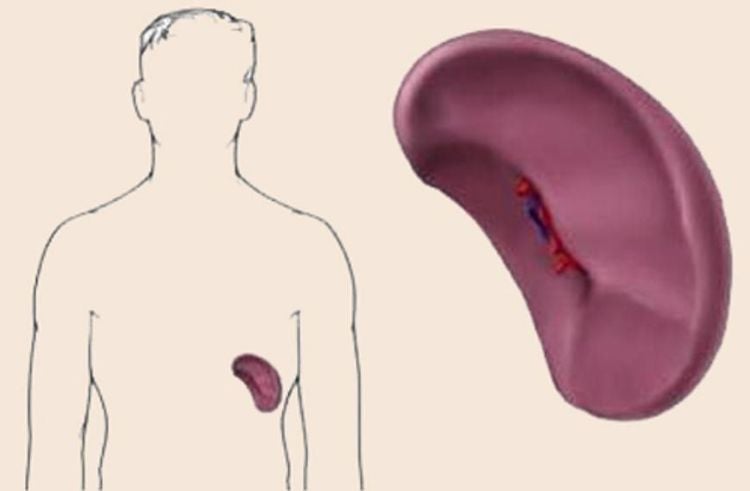
4. Diagnosis of splenic abscess
Diagnosis of splenic abscess requires a combination of history, clinical examination and laboratory tests, in which imaging tools play an important role in making a definitive diagnosis. determined. Patients have favorable factors such as a history of spleen injury, other acute inflammatory diseases, and weakened immune system. The patient was admitted to the hospital with fever, abdominal pain in the left upper part, examination revealed an enlarged spleen.Basic tests indicating inflammation such as CBC with predominant neutrophilia, elevated CRP, elevated procalcitonin...
Abdominal ultrasound shows spleen with mixed echogenicity, increased size.
Abdominal computed tomography allows the diagnosis of the disease when the image of splenic abscess is observed. In addition, computed tomography also assesses the extent of spread of splenic abscess and detects inflammation of other organs, especially those adjacent to the spleen.
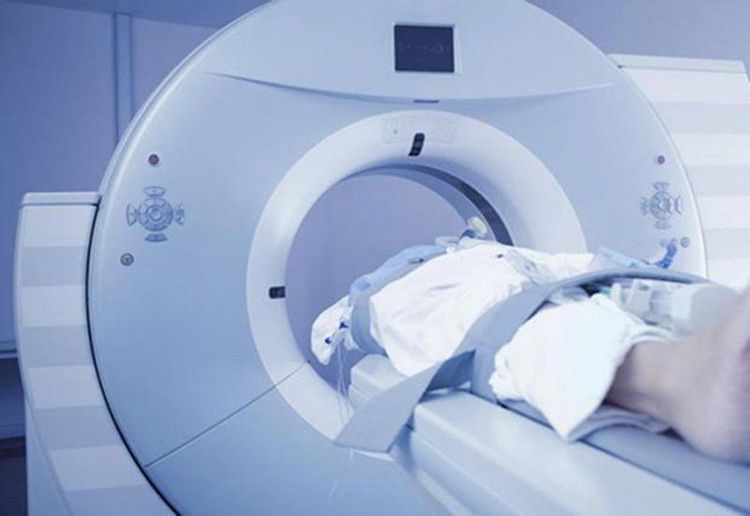
5. Treatment of splenic abscess
When splenic abscess is diagnosed at an early stage, small lesions often respond well to medical treatment with antibiotics. Initially, the patient was treated with empiric broad-spectrum antibiotics, which differed by region. After that, it is necessary to take pus samples for culture, perform antibiograms to identify pathogenic bacteria and choose to use specific antibiotics.Drainage of splenic abscess is a minimally invasive procedure and is the treatment of choice in combination with medical therapy in severe cases. Collecting specimens for culture through drains is also preferred because of less contamination. Purulent drainage helps to treat splenic abscess and preserve the spleen, the success rate is over 60%.
Splenectomy is indicated when the patient does not respond to the above treatments. Depending on the technical means and experience of the surgeon, splenectomy can be laparoscopic or open surgery.
Vinmec International General Hospital with a system of modern facilities, medical equipment and a team of experts and doctors with many years of experience in medical examination and treatment, patients can rest assured to visit examination and treatment at the Hospital.
Please dial HOTLINE for more information or register for an appointment HERE. Download MyVinmec app to make appointments faster and to manage your bookings easily.





